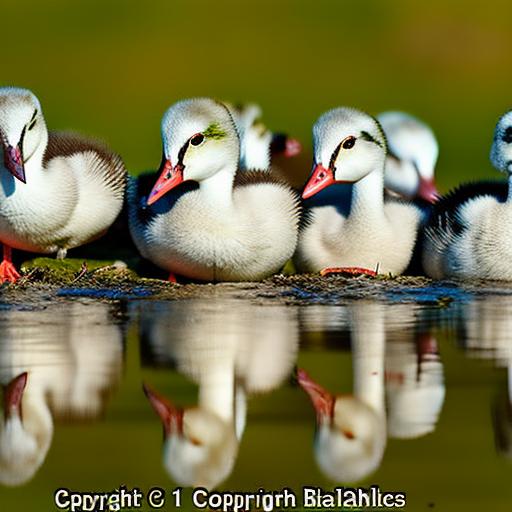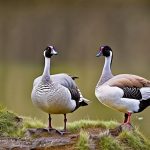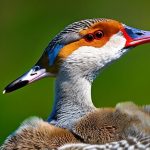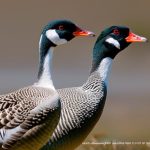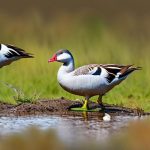Selecting the right breeding stock is crucial for a successful goose breeding program. When choosing breeding stock, it’s important to consider the health, temperament, and genetic traits of the geese. Look for birds that are healthy, active, and free from any signs of disease or deformities. It’s also important to select geese that have a good temperament, as aggressive or skittish birds can be difficult to handle and may not be good parents. In addition, consider the genetic traits of the geese, such as size, color, and conformation. If you have specific goals for your breeding program, such as producing geese for meat or for show, choose birds that have the traits you are looking for.
When selecting breeding stock, it’s also important to consider the age of the geese. Younger geese may not be fully mature and may not be ready to breed, while older geese may have a decreased fertility rate. It’s generally best to choose breeding stock that is between 2 and 5 years old, as they are likely to be in their prime reproductive years. Finally, consider the number of geese you will need for your breeding program. It’s generally best to have a ratio of one gander to three or four geese to ensure successful breeding and minimize aggression between the birds.
Creating the Ideal Breeding Environment
Creating the ideal breeding environment for your geese is essential for successful breeding. Geese are outdoor birds and require plenty of space to roam and graze. Ideally, they should have access to a large pasture or range where they can forage for food and build nests. If you don’t have access to a large pasture, you can create a smaller grazing area for your geese by using portable fencing or electric netting. Make sure the grazing area is free from predators and has access to fresh water at all times.
In addition to providing a suitable grazing area, it’s important to provide your geese with a comfortable and secure nesting area. Geese prefer to build their nests on the ground, so provide them with plenty of straw or other nesting materials in a quiet, secluded area. You can also provide nesting boxes or shelters to give your geese a safe place to lay their eggs. Make sure the nesting area is free from drafts and predators, and check it regularly for eggs. Finally, consider the climate in your area when creating the breeding environment for your geese. Geese are hardy birds and can tolerate a wide range of temperatures, but they may need additional shelter or protection from extreme weather conditions.
Understanding the Breeding Cycle
Understanding the breeding cycle of geese is essential for successful breeding. Geese are seasonal breeders and typically begin laying eggs in the spring. The breeding cycle begins with courtship behavior, during which the ganders will display to attract the attention of the geese. Once a pair has formed, they will begin building a nest and mating. Geese typically lay one egg every one to two days until they have a clutch of 5-12 eggs. The female will then begin incubating the eggs, while the male will stand guard and protect the nest.
The incubation period for goose eggs is approximately 28-30 days, during which time the female will rarely leave the nest. It’s important to provide the nesting area with plenty of food and water during this time, as the female will need to eat and drink regularly to stay healthy. Once the eggs hatch, the goslings will need to be kept warm and dry, so make sure they have access to a warm brooder or shelter. Understanding the breeding cycle of geese will help you anticipate their needs and provide them with the care they require at each stage of the process.
Maximizing Fertility and Hatch Rates
Maximizing fertility and hatch rates is essential for a successful goose breeding program. There are several factors that can affect fertility and hatch rates, including the age and health of the breeding stock, the quality of the nesting environment, and the care and management of the eggs during incubation. To maximize fertility, make sure your breeding stock is healthy and well-nourished, as poor nutrition can lead to decreased fertility rates. Provide your geese with a balanced diet that includes plenty of fresh water, green forage, and a high-quality poultry feed.
In addition to providing proper nutrition, it’s important to manage the breeding stock to ensure successful mating and egg production. Make sure your ganders are in good condition and are not overweight or underweight, as this can affect their ability to mate successfully. Provide your geese with a comfortable and secure nesting area that is free from predators and disturbances, as this will help reduce stress and increase egg production. Finally, monitor your geese regularly for signs of illness or injury, as these can also affect fertility rates.
During incubation, it’s important to provide the eggs with proper care and management to maximize hatch rates. Keep the eggs clean and dry, and turn them regularly to ensure proper development. Monitor the temperature and humidity in the incubator to ensure optimal conditions for hatching. Finally, be prepared to assist with hatching if necessary, as some goslings may need help breaking out of their shells.
Incubation and Hatching
Incubation and hatching are critical stages in the goose breeding process. Once the eggs have been laid, it’s important to provide them with proper care and management during incubation to ensure successful hatching. Goose eggs typically take 28-30 days to hatch, during which time they require consistent temperature and humidity levels. If you are using an incubator, make sure it is set to the correct temperature (99-100 degrees Fahrenheit) and humidity (45-55%) for goose eggs. If you are using a natural incubation method, make sure the nesting area is free from drafts and disturbances.
During incubation, it’s important to turn the eggs regularly to ensure proper development. Goose eggs should be turned at least three times a day until day 25 of incubation, after which they should be left undisturbed until hatching. Turning the eggs helps prevent the embryos from sticking to the shell membrane and ensures that they develop properly. It’s also important to monitor the temperature and humidity levels in the incubator or nesting area regularly to ensure optimal conditions for hatching.
Once the eggs begin to hatch, it’s important to provide the goslings with proper care and management to ensure their health and well-being. Keep the goslings warm and dry, as they are vulnerable to cold temperatures and drafts during their first few days of life. Provide them with access to fresh water and starter feed as soon as they are able to stand and walk. Monitor the goslings regularly for signs of illness or injury, as early intervention can help prevent problems from developing.
Caring for Goslings
Caring for goslings is an important part of successful goose breeding. Once the goslings have hatched, it’s important to provide them with proper care and management to ensure their health and well-being. Keep the goslings warm and dry during their first few days of life, as they are vulnerable to cold temperatures and drafts. Provide them with access to fresh water and starter feed as soon as they are able to stand and walk.
In addition to providing proper nutrition, it’s important to monitor the goslings regularly for signs of illness or injury. Common health issues in goslings include respiratory infections, leg problems, and nutritional deficiencies. If you notice any signs of illness or injury in your goslings, seek veterinary care immediately to prevent further problems from developing.
As the goslings grow, it’s important to provide them with plenty of space to roam and graze. Geese are outdoor birds and require plenty of space to exercise and forage for food. If you don’t have access to a large pasture or range, you can create a smaller grazing area for your goslings by using portable fencing or electric netting. Make sure the grazing area is free from predators and has access to fresh water at all times.
Troubleshooting Common Breeding Issues
Despite your best efforts, you may encounter common breeding issues when raising geese. One common issue is low fertility rates, which can be caused by poor nutrition, stress, or age-related factors in the breeding stock. To address low fertility rates, make sure your geese are receiving a balanced diet that includes plenty of fresh water, green forage, and a high-quality poultry feed. Provide your geese with a comfortable and secure nesting area that is free from predators and disturbances, as this will help reduce stress and increase egg production.
Another common issue is low hatch rates, which can be caused by improper care and management of the eggs during incubation. To address low hatch rates, make sure you are providing the eggs with proper care during incubation by turning them regularly and monitoring temperature and humidity levels in the incubator or nesting area. Be prepared to assist with hatching if necessary, as some goslings may need help breaking out of their shells.
Finally, you may encounter health issues in your goslings as they grow. Common health issues in goslings include respiratory infections, leg problems, and nutritional deficiencies. If you notice any signs of illness or injury in your goslings, seek veterinary care immediately to prevent further problems from developing.
In conclusion, successful goose breeding requires careful selection of breeding stock, creating an ideal breeding environment, understanding the breeding cycle, maximizing fertility and hatch rates, incubation and hatching care for goslings, as well as troubleshooting common breeding issues that may arise along the way. By following these guidelines and providing proper care and management for your geese at each stage of the breeding process, you can increase your chances of success in raising healthy goslings for meat production or show purposes.
Meet Walter, the feathered-friend fanatic of Florida! Nestled in the sunshine state, Walter struts through life with his feathered companions, clucking his way to happiness. With a coop that’s fancier than a five-star hotel, he’s the Don Juan of the chicken world. When he’s not teaching his hens to do the cha-cha, you’ll find him in a heated debate with his prized rooster, Sir Clucks-a-Lot. Walter’s poultry passion is no yolk; he’s the sunny-side-up guy you never knew you needed in your flock of friends!

